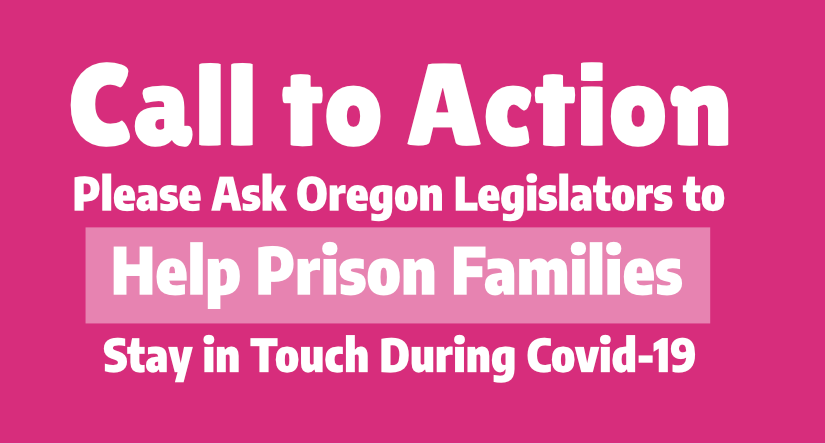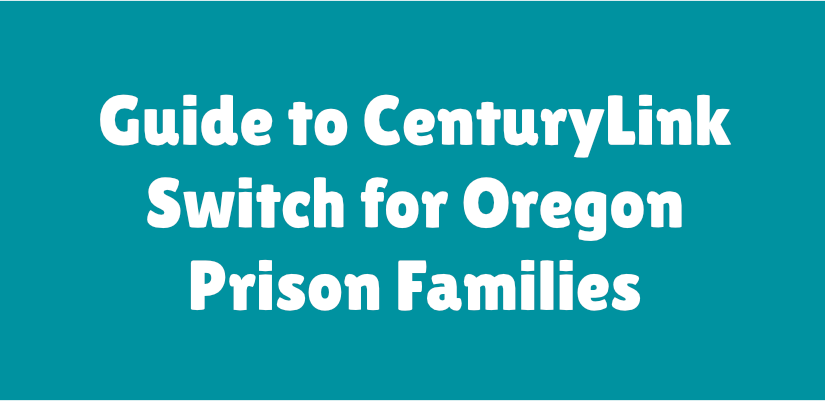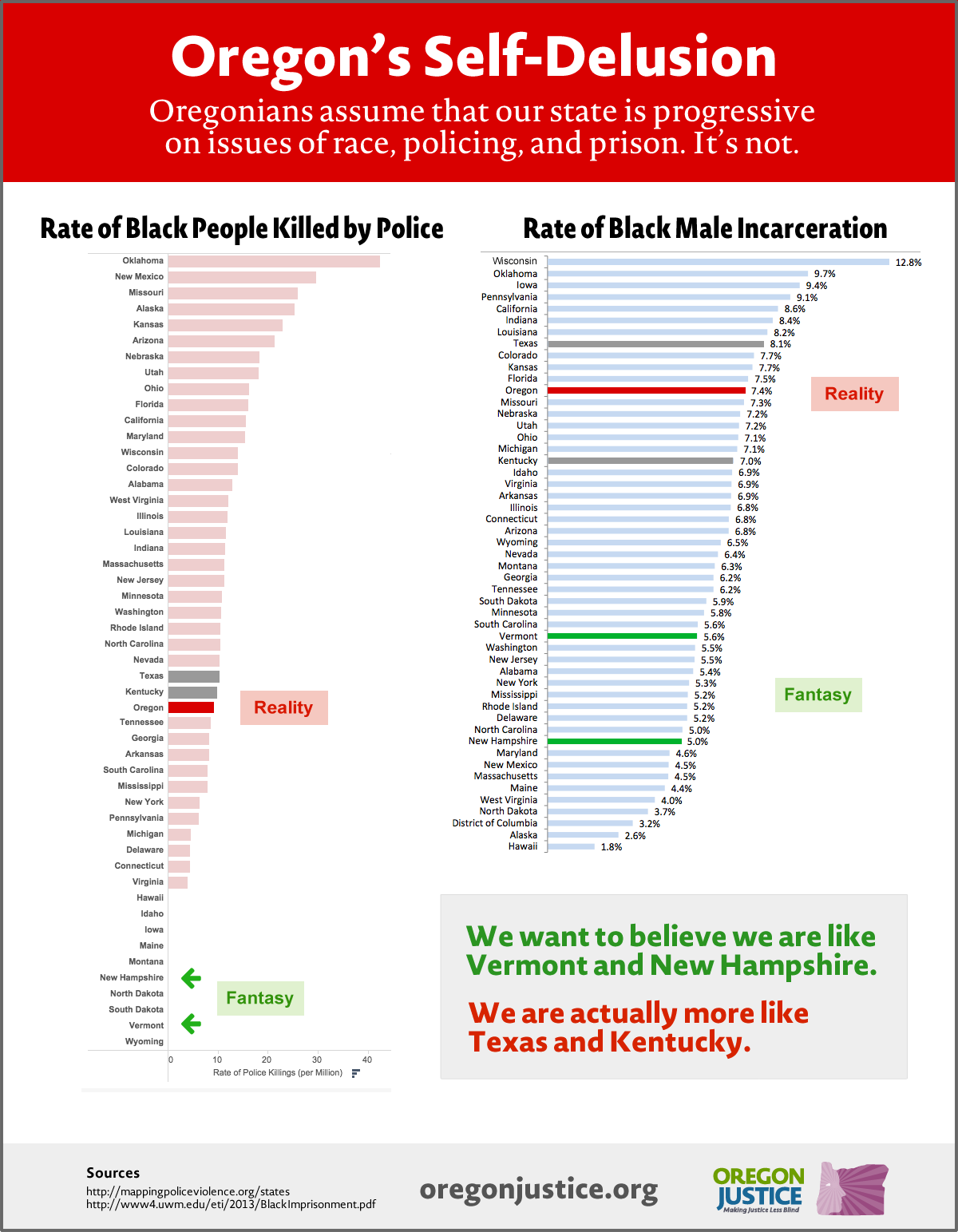Oregon DOC is in the process of switching from Telmate to CenturyLink in June 2020. I have previously written a guide for families as well as discussed how they are removing instant messaging.
This page is an attempt to document all the problems or unnecessary difficulties that I am aware of with the new system. (If I missed anything, please contact me.) I will also include potential remedies.
Making communication difficult isn’t just a burden to inmates and their families. It also makes it harder for journalists and increases the opacity of an institution that already has very little accountability to the public. I hope this document will serve as a basis to try to improve the situation.
About This Document
This is primarily to document structural issues in how the new system is set up.
I have avoided listing the numerous technical issues that people are having getting various systems to work, because it would be impossible to document them all. But if you review the sheer number of steps required, you can assume many people are struggling just to complete them.
I have also not listed things that are likely to work themselves out soon, like the fact that OSP still does not have video visit kiosks set up.
I am also limited in my ability to document the difficulties inside the prison. I have reviewed everything with my husband, but that’s only one institution (MCCF, a minimum). Every institution is different and minimums differ substantially from medium and max prisons. Minimums often afford a lot more flexibility and time in which one can access phones and tablets.
Also, in the interest of fairness, I will say there are two positive aspects of the new system that I am aware of.
- Phone calls are $.09/minute rather than $.16/minute. This is a significant cost savings and a huge improvement. Video visits are slightly cheaper, going fro $7.50 for 30 minutes to $5.88 for 28 minutes.
- Some people report video visits have a higher quality picture. (If they can get it to work, see below). I have not personally tried it.
Overall Problems
One Provider Was Replaced With Three
The functions that Telmate provided (phone, video visits, messaging, and deposit to inmate’s communication account) are now provided by three different companies – ICSolutions, CorrLinks, and Access Corrections. These are all “partners” of CenturyLink.
This is on top of the fact that to deposit into an inmate’s trust account, we already need to use one of three different providers: Telmate, JPay, or Access Corrections. This has not changed, but I am stating it to illustrate that family members already had to navigate multiple websites and apps to stay in touch with and support their loved ones.
Rollout Was Terrible & Everything is Unnecessarily Complicated
For the last month or more, the Facebook groups for family members that I am part of have been inundated with posts of people trying to make sense of the system. We have had to rely on each other other figure it out. That is why I wrote the guide. But not everyone is part of these groups or even know they exist.
DOC made an official announcement on June 1, just days before the first institution switched. The contract was signed in February, so they had plenty of time to prepare everyone and they just didn’t.
Prior to June 1, we were operating on rumors to even understand what was coming and when. I tracked down the contract on the ORPIN public information system just to figure out what the new phone rates would be, because when I asked the person who runs the official DOC Facebook page, they had no idea.
My husband reported to me that the rollout inside was just as bad. The instructions for setting things up were unclear and inmates ended up having to help each other navigate it. On our first phone call with the new system, he stopped several times to explain to other people the steps they had to take.
In their official announcement, DOC said, “DOC is aware this will be a significant change, but we are doing everything possible to minimize the impact the switch will have on your communication with friends and family members.” Needless to say, this does not square with reality.
During a Pandemic is the Worst Time For This
Visiting has been closed since March 13. That means nobody has seen their loved ones for over three months. People who have to travel a great distance to visit their loved ones have not seen them for even longer.
And if they do eventually open visiting in a very restricted way, people from far away probably still will not make the trip, because it won’t be worth it if we have to sit behind plexiglass and can only visit for an hour.
That means these communication methods are all we have to stay in touch and know our loved ones are OK. They are a lifeline and putting even more stress on them right now is cruel and immensely stressful for both family member and prisoners.
I understand they negotiated this change before the pandemic, but at the very least they could have increased their communication and transparency about the change. DOC shows repeated indifference to the challenges they impose on communication.
Family Members Were Not Consulted or Involved in This Decision
DOC should involve family members and inmates in decisions that greatly affect our ability to connect with each other. This is not a security issue and there is no reason to not make this an open, transparent, and collaborative process.
They are doing the same thing with visiting during Covid-19: we all know they are working to figure out how to open a restricted form of visiting, but all we have are rumors about how and when it will happen.
DOC should appoint a Family Connection Advocate who would review any change in how we are able to connect to make sure the needs of prisoners and family members are not overlooked.
Messaging (CorrLinks)
Instant Messages Have Been Removed
I discussed this extensively in my post about it. I will add that this remains one of the biggest impacts of the change. Many family members used this on a daily basis. It is a huge loss to have this taken away from us.
CenturyLink offers this option through their subcontractor Edovo. Edovo also offers the ability to do calls and video visits through the tablet, so people could talk to their loved ones in their cells. This would greatly improve the communication options available to families and prisoners.
DOC should switch to Edovo’s messaging system to provide instant messaging and other options.
Messages Are Delayed Inconsistently
Not only are the new messages not instant, but there is no consistency as to how long it takes for them to arrive. Sometimes they go through in two hours, and sometimes not for several days.
With the old system, we could tell if a message was blocked because it would not appear in the thread, and we would know it wouldn’t get there until the next day. With the new system, there is no way to know when it will arrive.
This makes them functionally useless to convey anything that is urgent. The only method left for that is voicemail, which now costs $.50, and phones are not accessible as tablets.
It is unclear what the source of the delay actually is. CorrLinks has responded to questions by saying it is up to each institution, and institutions have said it is not up to them.
DOC should create a consistent policy on timing for messaging. But returning to instant messages would be far better.
People On the Outside Cannot Initiate Contact
To be able to send a message to an inmate, you must first give them your email by a different means. So to even use CorrLinks, you must first either send them a snail mail letter containing your email address, or register for the phone system (which has its own difficulties) and leave them a voicemail (which costs .50) and hope they transcribe it properly. Keep in mind that people who has been down for over 10 years may have no idea what email even is or the correct format with the “@” sign.
This is unnecessarily difficult. Connections between prisoners and their family, especially their children, are often tenuous in the first place. Every additional step added to the process means a certain number of people will just give up. Those are connections that could and should have happened but simply won’t.
DOC should make it easy for a family member to give their loved ones their email address to begin the process.
They Can Only Compose Messages for 30 Minutes Each Day
When using the tablet, they can either use “free time” or “paid time” (which is $.04/minute.). They can only compose messages during “free time”. (The messages then cost $.25 to send.) If it takes them longer than 30 minutes, they must wait until the next day to finish.
Inmates should be allowed to spend as long as needed to compose messages.
They Can No Longer Message or Call Before Leaving For Work
Schedules differs for each facility, and this would apply only for minimum facilities where crews go offsite. This info was gathered from MCCF.
Inmates used to be able to send a message starting around 5:30 am. Now they can only log in and send messages starting sometime after 6:30 am, and the earliest they can use the phones is 6 am. Several work crews have already left by that point, meaning there is no way to send any communication before leaving for work.
Sending Printable Messages to People in Solitary Is Being Removed
Previously, we were able to use Access Corrections to send messages. We can still use Access Corrections to deposit money, but the messaging system is going away.
Access Corrections had an option to pay to have your message printed at the facility, and it would then be handed to the inmate in the morning. There was also a way to pay for them to be able to write a reply, which would be scanned in and sent back to you.
People in “the hole” are not allowed to use tablets or the phones. This was the only possible way to get messages to someone in segregation faster than snail mail. To write someone a letter, and then wait for them to write back, takes around a week round trip.
Before the pandemic, visits were allowed once per week, and now that is also impossible. Communication with family is one of the only things that makes solitary bearable.
DOC should either retain the Access Corrections message system, sign up for a different one that also allows printing, or allow use of tablets or phones while in solitary.
CorrLinks Has No Phone Support Number
This is another reason DOC should switch to using CenturyLink’s messaging rather than CorrLinks. CenturyLink provides a 24/7 support number.
Inmates Have to Switch Tablets to Add Money
Inmates can move money from their phone account to the tablet to be used for messages ($.25 each) and accessing content ($.04/minute). However, they cannot do that while still logged in. They have to run out of money, get kicked off, and get a new tablet in order to transfer more money and log in again.
Inmates should be able to extend their current session while using the tablet.
Inmates Now Have to Pay for Messages
With the old system, it cost money to be on a tablet, but it was possible for an inmate to compose a message on a kiosk, and then log in quickly to a tablet to send it. While most people still used tablets to talk back and forth, for people with very little money, there was a virtually free option. Now it costs $.25 for each message no matter what. When people are paid pennies for their labor, all of these costs add up.
DOC should make messages free to send. (Or they could actually pay prisoners the minimum wage.)
Phones & Video Visits (ICSolutions)
Phone Quality is Much Worse for Some
On phone calls with my husband, I have been able to hear him reasonably well, although background noise is noticeably increased.
However, he cannot hear me very well at all. He said there is static and I sound “garbled”. He often asks me to repeat things I say, or has obviously misheard me and I have to correct him. He said that it is only because he knows my voice and how I speak that he can piece together what I am saying.
DOC should demand better call quality from CenturyLink.
There Are Not Enough Phones for the Increased Usage
Making messaging much harder and less useful means we are left with phone calls as the main means of communication. Not having enough phones means that inmates have to stand in line for hours to be able to call.
DOC should add more phones or address the messaging situation.
(Updated) Video Visits Are Unavailable on Mac and iPhone
To use the video visit option, you must either download a Windows application or install an app on an Android phone. There is simply no option for Mac & iPhone users.
This is unacceptable and DOC should not have chosen a provider with such an obvious deficit. This is especially true during a pandemic when in-person visits are impossible. As of July 22, 2020, an app is now available for iPhones. It’s also called ICS Mobile, and you can find it searching in the app store for “icsolutions”.
Video Visits Cannot Be Scheduled Back to Back
All video visits are currently 28 minutes and cannot be scheduled for longer. They must also be scheduled 12 hour in advance. Previously, we could schedule visits sequentially, as well as spontaneously. Normal in-person visits are up to 3 hours. People who are unable to travel to visit their loved ones rely on video visits as the only substitute. Also, during the pandemic, we all rely on them.
Restore the flexibility for scheduling video visits that we enjoyed in the previous system.
Video Visit Rules Are Unnecessarily Restrictive
The new video visit rules include a prohibition on using electronic devices while on the call. That means you cannot show your loved one a photo on your cell phone, and you are also not allowed to take a photo or screenshot of your loved one on your screen.
This rule is pointlessly restrictive. These two activities – showing photos, and taking a screenshot, mimic activities that are normal to visiting. In the visiting room, we can get photos taken of us with our loved one, and we can bring photos to share with them. Right now, video visits are all we have, and for some, it is all they ever have.
Allow us to show our loved ones photos on our phone and take screenshots of our own visits.
Phone Validation Requires a Credit Card or a Phone Bill
Not everyone has a credit card, but it is required to validate your phone or do video visits. The backup method is manual and requires a cell phone bill.
When parents go to prison, it is up to their co-parent to keep the children in contact. If there is conflict this often doesn’t happen. Any additional steps make it even more difficult for kids to stay in contact.
Many people who have a year or less have just given up on staying in contact with certain family members and will wait it out. That isn’t even an option for people with more time.
People In Other Countries Have Difficulty Depositing Money for Video Visits
While inmates can call via phone using their own funds, video visits can only be scheduled and paid for using funds from someone on the outside.
ICSolutions has several options to deposit money, but they all can be difficult in this situation. Credit/debit cards must be registered to a US address and can’t be a prepaid Visa. The prepaid Western Union option is not available in all countries. This leaves the money order / check option through the mail. Unless the person’s bank will issue checks in USD, the person needs a bank account in the US to do this, and their bank has to have a form of bill pay that prints and sends paper checks.
While this is not a common situation, it is a situation in which being able to visit via video is even more essential since in-person visits are rarely possible.
Make it easier for people in other countries to deposit money to ICSolutions.
Depositing Money (Access Corrections)
Putting Money on an Inmate’s Communication Accounts is No Longer Free
With Telmate, depositing money for our loved ones to use for the phone or messaging was free. Now, to add money for them to use for their phone & tablet you must use Access Corrections. The fee is $1.95 for $25. That is an 8% surcharge, and the equivalent of a 20 minute call. Some have reported their credit card charged them a cash advance fee, as if they were withdrawing cash.
This should be free with no cash advance fee, as it was with Telmate.
Conclusion
In explaining this situation to people who are not involved with a prisoner, I am often asked, “Why did DOC make this decision? Why did they change providers to a much worse one? It doesn’t make any sense.”
I have no idea why, and they don’t have to tell us. As far as I can tell from reading the contract, this was an internal decision about how to run their facilities and no public official had to sign off on it. I am not aware of any regulation that says they have to provide a functional communication system, or that they have to study the impact of any change on families or prisoners, or involve us in any way in the process.
Maybe the system provides brilliant new forensic tools to analyze calls. Maybe the system on the staff side is much easier to use, even if it’s harder for prisoners. Maybe DOC gets a bigger cut of the profits. Who knows. But they are under no obligation to choose a system that works for us, so they didn’t.
DOC has repeatedly said they believe family connection is important. It would be nice if they acted like it.




